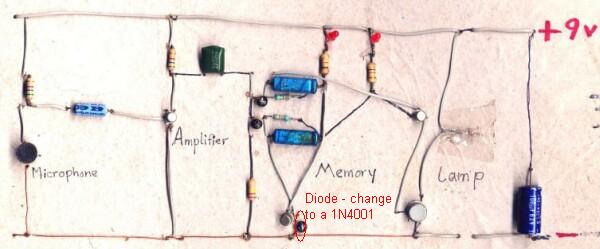simonwai999
Advanced Member level 4
hi
i got your reply audioguru
the diode polarities are all correct
and the + of the two 10 uf caps are connected to the collectors of both transistors too
but like i said from the beginning
after i connected the things exactly like the curcuit
i can clap to turn it on and then it turns itself off in about 31 seconds( i cannot turn it off by clapping)
and when it is off i can clap to turn it on again but then it turns itself off in about 31 seconds
the same goes on in this fashion
according to what it says on the site
the advice is like we clap to turn on the lamp and clap to turn it off
the result shows something totally diff
obviously something wrong with the curcuit
the bistable circuit cannot change states
regards
i got your reply audioguru
the diode polarities are all correct
and the + of the two 10 uf caps are connected to the collectors of both transistors too
but like i said from the beginning
after i connected the things exactly like the curcuit
i can clap to turn it on and then it turns itself off in about 31 seconds( i cannot turn it off by clapping)
and when it is off i can clap to turn it on again but then it turns itself off in about 31 seconds
the same goes on in this fashion
according to what it says on the site
the advice is like we clap to turn on the lamp and clap to turn it off
the result shows something totally diff
obviously something wrong with the curcuit
the bistable circuit cannot change states
regards
